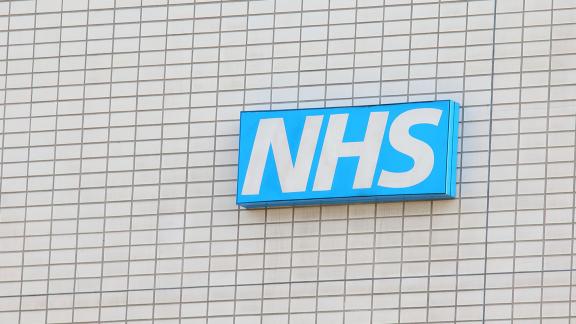Planning guidance 2021/22 update: October 2021 to March 2022

On 30 September, NHS England and NHS Improvement (NHSEI) chief executive Amanda Pritchard wrote to NHS organisations to outline an updated version of 2021/22 operational planning guidance and the NHS’s priorities between now and March 2022. This briefing sets out our view on the guidance and summarises some of the key issues. You can also read our response to the full operational planning guidance for 2021/22.
Key points
- The six priorities outlined in the 2021/22 operational planning guidance published in March still stand: supporting the workforce; delivering vaccinations and ongoing COVID-19 support; transformation to accelerate recovery of electives and address rising demand for mental health services; expanding primary care capacity to address health inequalities; transforming community and urgent and emergency care to reduce pressure on emergency departments; and system collaboration.
- Within the priorities, a notable addition includes a targeted investment fund of £700 million to spend by the end of March 2022. This is part of the funding announced in the latter half of the financial year (H2) settlement and will be positively received by NHS organisations who need quick access to capital. However, the short timescale available for applications is likely to cause frustration given that NHS organisations have consistently asked for long-term certainty on capital availability to invest in new and more efficient ways of working.
- The updated guidance on elective recovery focuses on eliminating long waits and clinical validation of surgical waiting lists, with a focus on patients in pathways 1-3. Activity that removes people from waiting lists altogether has been highlighted as a key priority. To support this, the Elective Recovery Fund (ERF) threshold is slightly lower at 89 per cent of 2019/20 referral-to-treatment (RTT) pathway activity, with a focus on clock stops and stopping long waits.
- The ambition in the guidance to stabilise waiting lists around the level seen at the end of September 2021 aims to set a new baseline for the ongoing management of the backlog. However, delivering this target in practice will depend in large part on factors beyond the control of the service, such as the level of COVID-19 demand and cases of winter flu.
- Over 7 million people are expected to present for care over the coming months, many of whom are from deprived and disadvantaged communities. The approach taken in this guidance of not allowing waiting lists to grow above current levels risks worsening health inequalities by not helping local systems to reach out to the people in the ‘hidden’ waiting list in their local communities.
- The dual focus on 52/104 week waits and clinically led decision-making designed to reduce harm to patients may create tension, as well as the potential impact on widening health inequalities.
The implementation of this guidance by NHS leaders needs to be supported by continued clear public messaging from the government on how long it will take to fully recover services. We welcome the Secretary of State’s recent comments on the scale of the challenge, but it is important that the public are made aware that the elective backlog could take five to seven years to address, and that local services will need to prioritise those who need treatment most urgently.
The guidance at a glance
A. Supporting the health and wellbeing of staff and taking action on recruitment and retention
- Focus on delivery of workforce plans that increase workforce availability, support new and more productive ways of working and transformation opportunities.
- Continue to move to whole system workforce planning to support the move towards statutory integrated care systems (ICSs) in April 2022.
B. Delivering the NHS COVID-19 vaccination programme and continuing to meet the needs of patients with COVID-19
- The guidance reiterates previous guidance, specifically from the Joint Committee on Vaccination and Immunisation (JCVI) around systems proceeding with vaccinating eligible individuals with booster doses for immunosuppressed individuals, with a focus on those in older adult care homes and care home staff, and ‘evergreen offers’ of a first and second dose to at-risk 12- to 15-year-olds.
- Systems are advised to engage their local school-aged immunisation service providers to deliver COVID-19 vaccinations.
C. Building on what we have learned during the pandemic to transform the delivery of services, accelerate the restoration of elective and cancer care and manage the increasing demand on mental health services
- Systems are encouraged to maximise elective activity and eliminate waits of over 104 weeks, taking full advantage of opportunities to transform the delivery of services, including clinical prioritisation of patients on waiting lists.
- The aim is to return to – or exceed – pre-pandemic levels of activity in H2 to reduce long waits and prevent further lengthening of waiting lists by:
- eliminating waits of over 104 weeks by March 2022 except where patients choose to wait longer (‘P5’ and ‘P6’ patients)
- holding or where possible reducing the number of patients waiting over 52 weeks - NHSEI will work with systems and providers to agree individual trajectories through the planning process
- stabilising waiting lists around the level seen at the end of September 2021.
- Further information can be found on pages 6-8 of the guidance.
- Systems should work with NHSEI regional teams to propose, by 14 October, a shortlist of investments to be supported by the £700 million Targeted Investment Fund, focusing on the highest priority elective recovery reforms, and on systems and providers facing the greatest challenges in restoring activity.
- The threshold for eligibility for the ERF is now at 89 per cent of 2019/20 completed RTT pathway activity. Part of the ERF will also be used to centrally fund independent sector activity above 2019/20 levels.
- Systems are expected to restore full operation of all cancer services, with priorities for recovery remaining the same as in the first half of the year.
- Systems should expand and improve mental health services and services for people with a learning disability and/or autism through delivering on their 2021/22 Mental Health plan. Recovery of face-to-face community mental health care is to be accelerated, and front runner provider collaboratives are expected to have whole pathway commissioning in place for April 2022.
- Systems are asked to deliver improvements in maternity care, including responding to the recommendations of the Ockenden review. Named digital leads, to work up local plans and guide implementation, should be provided to the NHSX Digital Child Health and Maternity Programme by 31 January 2022.
D. Expanding primary care capacity to improve access, local health outcomes and address health inequalities
- Systems should continue to prioritise local investment and support for general practice as well as primary care networks (PCNs), including supporting recruitment under the Additional Roles Reimbursement Scheme (ARRS) to ensure that nationally 15,500 additional full-time equivalents are in post by the end of 2021/22.
- Systems are specifically asked to support their PCNs to work closely with local communities to address health inequalities and use of technology.
- Systems should support practices with access challenges so that all practices can deliver a blended access model, incorporating some face-to-face care.
E. Transforming community and urgent and emergency care (UEC) to prevent inappropriate attendance at emergency departments (EDs), improve timely admission to hospital for ED patients and reduce length of stay
- The government has extended discharge to assess funding to cover the first four weeks of post-discharge recovery and support services until 31 March 2022.
- Systems are asked to work with social care to ensure the Hospital Discharge and Community Support policy and operating model are fully implemented.
- Two-hour community crisis response teams are expected to be providing consistent national cover by April 2022 across every ICS. Activity should be fully reported into the Community Services Data Set from 1 October 2021.
- Systems should manage increasing pressure within urgent care and support winter resilience, including embedding actions in the UEC action plan and developing effective integrated operational delivery plans.
- Systems should continue to oversee paediatric acute care plans in anticipation of increased demand for respiratory viruses treatment, supported by NHSEI.
F. Working collaboratively across systems to deliver on these priorities
- Designated integrated care board (ICB) chief executives and regional directors will be asked to sign a readiness to operate statement in March 2022, confirming that all relevant preparations and due diligence have been carried out to enable the ICB to fulfil its statutory functions from 1 April 2022.
- Systems will continue to receive fixed system funding based on the first half of the financial year (H1) 2021/22 envelopes adjusted for additional pressures, such as the impact of the pay award.
- H2 envelopes include an increased efficiency requirement from H1. Where systems are able to go further, in preparation for 2022/23, they should take action with any savings re-invested in supporting non-recurrent recovery initiatives.
- Further details are set out in the accompanying document Guidance on Finance and Contracting Arrangements for H2 2021/22.
- By 14 October, systems are expected to rapidly submit elective recovery and capacity plans for H2 and a proposed shortlist of investments for the Targeted Investment Fund that can be delivered in year.
- By 16 November they must submit a final set of plans covering H2 using the templates issued and covering the key actions set out in this document.
NHS Confederation viewpoint
The guidance rightly focuses on prioritising patients with the greatest clinical need, including long waiters. However, in addition to these, we expect over 7 million people to be added to the waiting list, many of whom will be from deprived and marginalised groups. The NHS will need to deploy some of the approaches used in the highly successful vaccination programme to reach those populations and encourage people to come forward for care.
We have welcomed Sajid Javid’s openness about the scale of the backlog and the millions of people who are yet to present for treatment. Accordingly, this guidance should be accompanied by clear messaging from the government on the demands on the service, the importance of seeking care promptly, and why prioritisation is important to protect the most vulnerable and improve overall outcomes. The NHS needs the government to continue to be honest and transparent with the public that the elective situation could take five to seven years to address.
Ongoing workforce challenges
We were glad to see that people remain at the heart of the plans for NHS recovery and transformation. Reducing the backlog of care in sustainable ways that avoid overloading NHS staff is among the top concerns of healthcare leaders and it is becoming more difficult to do so.
The British Medical Association (BMA) has estimated that even if the NHS were to run at 110 per cent of its pre-COVID-19 capacity, it could take up to five years to reduce the backlog of elective care in England to (already high) 2019 levels. Despite ongoing efforts to re-deploy staff, it is becoming much harder to mobilise an exhausted workforce across the system. Our members have called for guidance on a consistent approach to incentivising staff to take on extra work, especially in advance of winter pressures and the expected increase in respiratory viruses.
In responding to the guidance on face-to-face appointments, a balanced debate about the blend of appointments in primary care is required. What is important is that patients have a choice, in discussion with a clinician. Remote consultations have not only enabled primary care to continue to deliver care to those most in need during the pandemic but have and are still a vital mechanism to free up capacity to ‘see’ patients who need to be seen.
At a time when workforce is stressed and exhausted, the NHS will need to work together to dispel any negative narratives. Only by being honest as to the whole-system scale of a problem caused by 18 months of COVID-19, and supporting staff to get through this winter, will we maintain the trust and confidence of the public that is so critical to NHS staff morale.
Long-term planning
This planning guidance represents another six-month plan. Our members have repeatedly called for clarity to plan and invest in efficiency long term. The £700 million Targeted Investment Fund, including £500 million capital funding, is welcome, but our members first called for it in March 2021, and they now only have a few weeks to apply for it. The NHS needs a long-term plan for capital to support and enable members to invest in elective hubs, diagnostics and build hot and cold sites.
Eliminating long waits
The guidance focuses on eliminating long waits for patients supported by funding. Although we welcome this ambition, this is a significant ask of the system at this time and that some specific targets and incentives included in the guidance that may create tensions and worsen health inequality.
We welcome the moving of the ERF threshold of 89 per cent of 2019/20 RTT pathway activity down from 95 per cent, which will allow more providers to access the fund. However, moving to a September baseline for recovery of elective care and ensuring waiting lists do not increase beyond this point is largely dependent on levels of winter demand. It also does not consider that there will be regional variation in the impact of COVID-19.
By focussing on 52 or 104 week waits, clinicians may have to make difficult decisions about whether to prioritise, for instance, a patient with a P4 hernia waiting over two years over a P2 cancer operation. Decisions should be left to clinical judgement of what minimises harm to patients, and we should be wary of the impact on clinical engagement of prioritising targets over patient care. Wherever possible, local clinicians should be making decisions on priorities. They are closest to patients and their families.
Aside from the potential tensions and damage to health equity, the challenge of eliminating long waits is a significant ask of the system. If by March we would like nobody on a list who has been waiting 104 weeks or more, the service would need to have treated over 180,000 people from the end of July 2021 onwards (based on the latest NHS England data). 1 This will need to be achieved at the same time as we go into winter, facing the expected spike in COVID-19 cases, a time last year when we saw services having to cancel elective care to deliver the urgent emergency care that is so essential.
NHSEI regional teams should work with systems to offer them flexible support and not sanction them where targets are not met if there is a resurgence in COVID-19 infections or other high-pressure events associated with winter.
Health inequalities
We believe that the focus in the guidance on reducing 104 and 52 week waits, as well as the September 2021 baseline, could lead to an increase in health inequalities.
In our recent briefing, a key initiative proposed by members includes proactively reaching out to patients - predominantly those from deprived and ethnic minority backgrounds, who should be waiting for care, but who for a number of reasons have not presented, to add them to the waiting list - thus growing the backlog in the short term to ensure more equitable outcomes for everyone. This is directly at odds with the approach NHSEI outlines in this guidance.
We urge NHSEI and the government to consider whether the focus on a September 2021 baseline can be flexible to enable systems to adopt approaches that are right for the communities that they serve. If patients are treated solely in the order they present for care, inequalities and health outcomes could worsen.
Footnotes
- 1. https://www.england.nhs.uk/statistics/statistical-work-areas/rtt-waiting-times/rtt-data-2021-22/. Incomplete Commissioner Jul21 data set. All patients waiting over 70 weeks in the NHS England RTT Dataset - that is everyone who is currently waiting and has already been for 104 weeks or more, plus those who will pass the 104 week point before March. ↑



